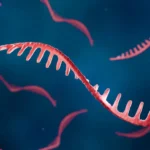Single-cell RNA sequencing (scRNA-seq) is a revolutionary technology that helps us understand gene expression at the level of individual cells. One of the most popular tools for scRNA-seq data analysis is Seurat, an R package designed to make it easy to analyze and visualize scRNA-seq data.
In this Single Cell RNA Analysis Seurat Workflow Tutorial, you will be walked through a step-by-step guide on how to process and analyze scRNA-seq data using Seurat. We’ll cover important steps like data loading, quality control, normalization, clustering, and visualization.
Getting Started with Seurat
Step 1: Install and Load Seurat
First, you need to install the Seurat package. If you haven’t installed it yet, you can use the following code:
# Install Seurat if you haven't already
install.packages('Seurat')
# Load Seurat library
library(Seurat)
Once installed, you’re ready to begin your single-cell analysis journey.
Step 2: Load Your scRNA-seq Data
Seurat accepts data in various formats. The most common format is a matrix where rows represent genes and columns represent cells. Let’s assume you have your data stored in .rds format or a raw count matrix. Load your data like this:
# Load scRNA-seq data
sc_data <- Read10X(data.dir = "path_to_data/")
# Create Seurat object
seurat_object <- CreateSeuratObject(counts = sc_data, project = "SingleCellProject")
The function CreateSeuratObject() creates a Seurat object that will store your scRNA-seq data and analysis results.
Step 3: Quality Control (QC)
Before proceeding to downstream analysis, you need to filter out low-quality cells. Seurat allows you to filter cells based on the number of genes detected and the percentage of mitochondrial genes, which is a good indicator of dead or stressed cells.
# Calculate the percentage of mitochondrial genes
seurat_object[["percent.mt"]] <- PercentageFeatureSet(seurat_object, pattern = "^MT-")
# Visualize QC metrics
VlnPlot(seurat_object, features = c("nFeature_RNA", "nCount_RNA", "percent.mt"))
# Set QC thresholds to remove poor-quality cells
seurat_object <- subset(seurat_object, subset = nFeature_RNA > 200 & nFeature_RNA < 2500 & percent.mt < 5)
This step removes cells with low gene counts, high gene counts (which could indicate doublets), and cells with high mitochondrial content (which often represent dying cells).
Step 4: Normalization
Normalization adjusts for the differences in sequencing depth between cells. This is a critical step before proceeding to clustering and differential expression analysis.
# Normalize the data
seurat_object <- NormalizeData(seurat_object)
Here, NormalizeData() adjusts the gene expression values so they are comparable across cells.
Step 5: Identify Highly Variable Genes
Seurat identifies genes that exhibit high cell-to-cell variation, which will later be used for dimensionality reduction and clustering.
# Identify variable genes
seurat_object <- FindVariableFeatures(seurat_object, selection.method = "vst", nfeatures = 2000)
# Visualize the top 10 variable genes
top10 <- head(VariableFeatures(seurat_object), 10)
VariableFeaturePlot(seurat_object) + LabelPoints(points = top10, repel = TRUE)
In this step, Seurat focuses on the genes that have significant differences in expression across cells, which are informative for downstream analysis.
Step 6: Scale the Data
After identifying variable genes, the next step is to scale the data, which standardizes the expression values.
# Scale the data
seurat_object <- ScaleData(seurat_object)
This standardization ensures that each gene has the same weight in downstream analyses.
Step 7: Perform PCA (Principal Component Analysis)
PCA is used for dimensionality reduction and helps to capture the main sources of variation in the data.
# Run PCA
seurat_object <- RunPCA(seurat_object, features = VariableFeatures(object = seurat_object))
# Visualize PCA results
VizDimLoadings(seurat_object, dims = 1:2, reduction = "pca")
DimPlot(seurat_object, reduction = "pca")
ElbowPlot(seurat_object)
The ElbowPlot helps you choose the number of principal components (PCs) to use for downstream analyses.
Step 8: Clustering the Cells
Now, we’ll use the PCs to cluster the cells. Seurat uses a graph-based clustering method.
# Find neighbors and clusters
seurat_object <- FindNeighbors(seurat_object, dims = 1:10)
seurat_object <- FindClusters(seurat_object, resolution = 0.5)
# Visualize clusters using tSNE or UMAP
seurat_object <- RunUMAP(seurat_object, dims = 1:10)
DimPlot(seurat_object, reduction = "umap")
Here, UMAP (Uniform Manifold Approximation and Projection) is a popular technique for visualizing clusters of cells in 2D space. You can adjust the resolution parameter to control the granularity of clustering.
Step 9: Marker Gene Identification
After clustering, you’ll want to identify marker genes that are highly expressed in each cluster.
# Identify marker genes for each cluster
cluster_markers <- FindAllMarkers(seurat_object, only.pos = TRUE, min.pct = 0.25, logfc.threshold = 0.25)
# View top markers
head(cluster_markers)
This step helps you understand which genes define each cluster, giving biological meaning to the groups.
Step 10: Visualize Marker Genes
To make your findings more interpretable, you can visualize marker gene expression across clusters. FeauturePlot R, Dimplot or Dotplot R can be used to visualize data.
# Visualize expression of a marker gene
FeaturePlot(seurat_object, features = c("GeneX"))
You can replace "GeneX" with any gene of interest to observe its expression pattern across different cell clusters.
Conclusion
This Single Cell RNA Analysis Seurat Workflow Tutorial covers the essential steps for analyzing single-cell RNA-seq data using Seurat. By following this workflow, you can go from raw scRNA-seq data to meaningful biological insights.
Seurat offers a wide range of functionalities for deeper analysis, including differential expression testing, trajectory analysis, and integration of multiple datasets. However, the steps outlined in this Single Cell RNA Analysis Seurat Workflow Tutorial should give you a solid foundation for understanding the basics of scRNA-seq analysis. Feel free to explore further as your dataset and questions evolve!
Key Takeaways:
- Seurat simplifies the analysis of single-cell RNA-seq data.
- The workflow includes essential steps like QC, normalization, clustering, and marker identification.
- Seurat’s built-in visualization functions make it easier to interpret the results.
Happy analyzing!



